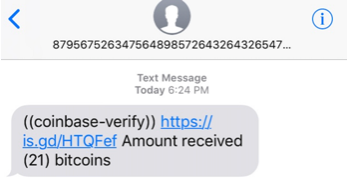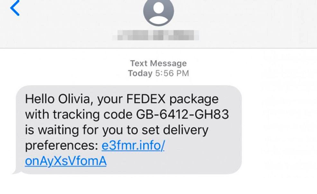While spotting fake text messages may seem easy, a report from FoxLA reminds us that scammers are making them more and more challenging to spot. Just recently, a tech industry worker was involved in a texting scam. Fronting as Wells Fargo, the scammer used the company’s customer service number to solidify the scheme. Then, without suspicion, she wired $4200 to an unknown source.
This elaborate scheme and many others caused companies like Wells Fargo and FedEx to push statements to educate customers on the dangers of text message scams.
Knowing how to identify a fake text message is essential to protect you and your business.
How to Spot Scam Texts
A scam text message is a text that comes from an unknown number that tricks you into giving away your personal information. With this information, they can access your email, bank account or gain access to other confidential information.
To spot scam texts, it’s important to keep these red flags in mind:
- The message is irrelevant to you
If the message comes from a company you are not affiliated with, that is a big sign of a scam text. Group texts that don’t seem directed to you can also be a sign of a spam message. In this case, delete the message and block the number.

Spam group text about free money. Source: KGW8 - Grammar/Spelling Mistakes
Just like with emails, another sign of spam text is tons of grammar and spelling mistakes. If the message comes from an unknown number with significant errors, it’s a telltale of a spam message. - Abnormally Long Numbers
Sometimes spammers use unknown numbers or numbers longer than your average 10-digit number. Beware! Scam Texts may use international numbers or generated numbers to send information.

Spam text with more than 10 digits. Source: Cryptohopper - Offering Incentives/Refunds
Most times, scammers use unknown numbers to offer free prizes or trips. They usually ask you for additional information, such as your address or other personal information, to receive the prize. These text message scams can cause significant damage if you interact. - Suspicious Links
Often with these “incentives” or messages fronting corporations like Amazon, they may ask you to click on a link for further action. To prevent yourself from logging onto a phishing site or accidentally downloading malware onto your device, it’s best to assume the link is fake.

Fake text message about FedEx delivery. Source: Fox31 - Urgent Tone/Require Immediate Attention
Urgency is a tactic that can trick you if you aren’t careful. For example, the text message may demand urgent attention to an issue with your personal assets or business. If you aren’t expecting this text message and know that most companies like the IRS won’t interact with you via text, you can be sure that the message is a scam.
How to Prevent Text Message Scams
Even with deleting and blocking spam messages, Norton shares a few ways to prevent scammers from getting your personal information.
- Block/Report Contact
Deleting the message is a good start, but it doesn’t guarantee they will not text you again. Going into your phone and blocking the number is a good way to prevent fake text messages. - Report Spam Texts to your Cell Phone Carrier
Along with blocking the number, you can also report spam texts. Forward your message to “7726” or your Carrier’s spam team. From there, they can investigate the number. This keeps you safe and protects others from falling victim to scam texts. - Enable Spam Filters
Another option to prevent scam texts is using the built-in spam filter on your phone. You can turn on “Filter Unknown Senders” for Apple to catch spam messages. Android has a more direct approach that allows you to “Enable Spam Protection.”

- Add Your Number to the Do Not Call Registry
Spam calls and text messages can become bothersome to your daily life. To stop unwanted calls and texts, add your number (business and personal) to the Federal Trade Commission’s Do Not Call Registry and keep those unwanted telemarketing calls and texts at bay. - Be Cautious of Giving out Personal Information on the Internet
Phishers access phone numbers through personal information we give out on the internet. Don’t give out your personal information when in doubt of the source.
Protect Your Business from All Forms of Phishing
As technology remains a crucial part of business success, phishing will continue. If you are unsure how to identify a fake text message alone, consider working with a trusted third party like ABI. Our Managed IT services and cybersecurity efforts secure your systems from online phishing and hacking attempts. Get started with a free consultation today to assess your risks and create solid cybersecurity systems to help your business thrive.



